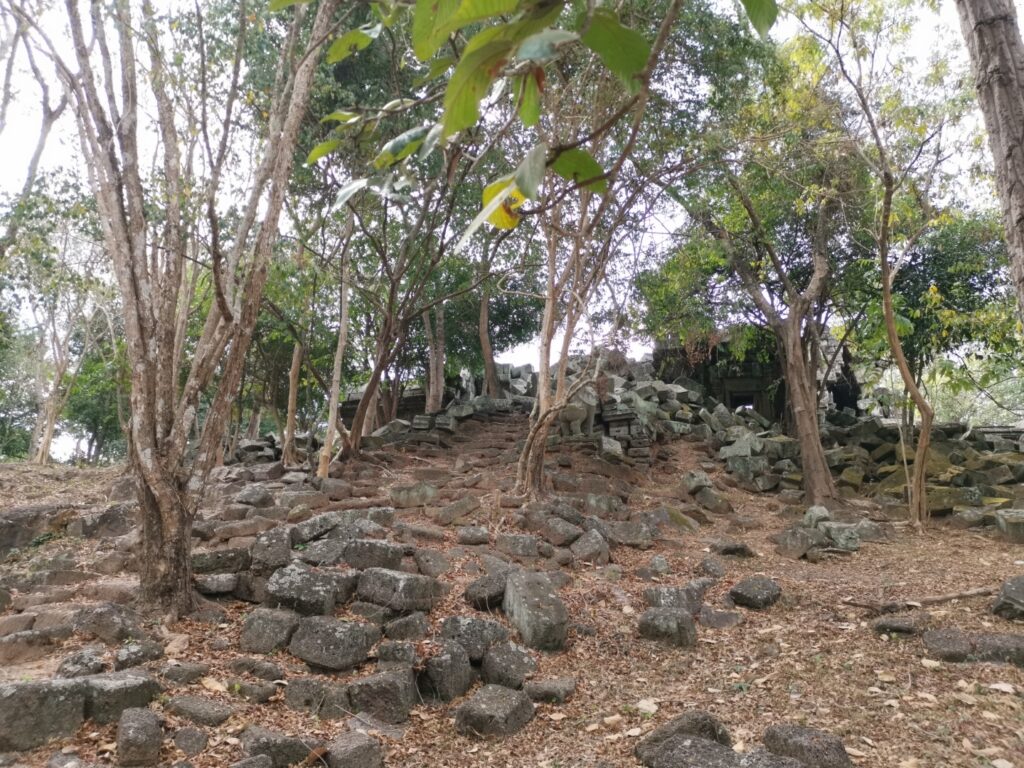Chaw Srei Vibol – a decayed temple
Chaw Srei Vibol is a Hindu temple complex built in the 12th century. It is located about 23 kilometers from Siem Reap and is situated in the north of the Roluos group. Despite its beauty, the temple is much less frequently visited than comparable temples in the region, which is why Chaw Srei Vibol is an insider tip for temple fans who like to get away from the crowds. The area to be visited here measures only 900 meters by 600 meters – accordingly, not too much time should be kept free for the visit: The temple is already very dilapidated, there are hardly any opportunities to try to decipher former inscriptions anywhere, let alone get a clear impression of how the complex must have once looked in its high time.

Ruins at Chaw Srei Vibol
The site is also particularly beautiful because the area is now heavily forested: far from the usual tourist trails, here you get a glimpse of the process by which nature reclaims built-up areas over centuries. The closeness to nature is palpable to visitors throughout their stay, as the only background noise is the cries of jungle birds. Due to the condition of the site, it is recommended to hire an experienced guide who can show you in more detail the peculiarities of the place. The area is surrounded by a moat that can be crossed from both the east and the west. In order to discover this moat as well, a little prior knowledge is needed, otherwise this is not one of the things that would necessarily jump directly into a visitor’s eye. If you move outside the wall that surrounds the temple, you will first reach the west gopura, the gate tower of the structure. Unfortunately, this is now also only a stone heap of its own, the original appearance can be guessed only with extraordinary imagination.
Inside the temple, it doesn’t take so much imagination to visualize the former total extent of the complex. Also some stone pillars are still to be recognized here.
In the southwest of Chaw Srei Vibol there is a former water basin, which may have served as a drinking water reservoir for the inhabitants and monks at that time.
Interestingly, the temple complex was built almost entirely of laterite, which, in contrast to the many sandstone buildings in the region, is a clear distinguishing feature.
In sum, a visit to Chaw Srei Vibol can only be recommended to any visitor who would like to immerse themselves in nature for a bit and get away from the crowds.
